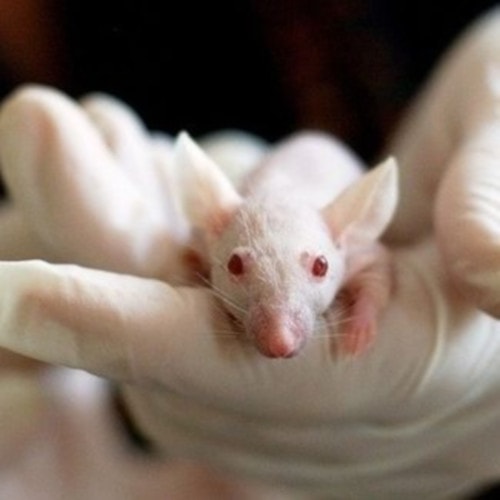Ethics, or moral philosophy, work with general principles of right and wrong, of just and unjust, of appropriate and inappropriate, which usually lean towards obscuring what may crop up in between. Lesley Sharp’s new book, Animal Ethos: The Morality of Human-Animal Encounters in Experimental Lab Science, explores how laboratory inter-species morality dwells in this space of in-between. This may seem like an extremely difficult, if not even impossible endeavour. However, Lesley Sharp meticulously documents how working and living with animals in experimental laboratories often entails interspecies intimacies leading to everyday morality. The author does not aim to offer animal welfare advice, nor to set up ethical protocols for working with animals living in research facilities.
Lesley Sharp looks at how experimental labs involving animals may become ‘moral laboratories’ (Mattingly 2014) through everyday care, how living and working with and alongside non-human animals generate affective practices and moral tensions.
Animal Ethos is informed primarily by seven years of extended fieldwork in university research facilities across the U.S. and the UK. However, Sharp’s research related to morality spans three decades, covering cadaveric human organ transplant, xeno-transplantation (non-human organ transplant) and artificial human organ replacement. In this regard, Sharp proves to master the anthropological craft of thick description and intricate theoretical discussions of a topic that commonly eludes the scientific discourse.
The first part of the book, Intimacy, speaks about morality in terms of the sentimental structure of laboratory life. Sharp shows how the animal model (i.e., the use of animals to model human diseases, cures and treatments) and the moral stand that may engage are based on a contradiction. The animal has to be human alike enough to stand in as their substitute, but unlike enough not to resemble too much humans so it may be deemed unethical or too morally disturbing. In this respect, the morality of lab worlds bridges across the human-animal divide in a likeness/unlikeness moral tension that questions the human exceptionalism that dominates in Western philosophical tradition. Looking at experiments involving monkeys and non-human primates (NHPs) watching TV, Sharp shows how lab work circles back as actions of enriching lab animal life. This is reminiscent of studies specifically designed to map animal cognition (in particular for testing theory of the mind hypothesis) and sentience, only to then be incorporated in arguments and strategies of animal welfare, although not always for animals living in a lab. This practice speaks about moral endeavours that add different perspectives on morality, transforming the lab animals into something more than objectified resources of research data: something to think and feel with.
The second part of the book, Sacrifice: An Interlude, delves into the moral and often emotional labour emergent in working with animals whose lives have to be terminated. Although the experimental use of animals capitalizes on a moral calling on saving humans’ lives, the rhetoric of heroism and salvation are usually absent. However, the stigma associated with animal lab research is not symmetrically manifested inside the lab world, where animals’ lives and deaths become celebrated through individual and collective forms of memorialisation. Thus, killing becomes ‘sacrificing’, ‘culling’, ‘sacking’, or, as in the case of animal carers and vets (reflecting an outside vocabulary), ‘euthanising’. Killing, Sharp shows, is strictly regulated through research protocols: on the one hand, as a way of collecting data through necropsy, on the other as a humane way of avoiding a (miserable) lab life of being ‘recycled’ in new experiments. This is also reflected in the third part of the book, chapter 5, The Animal Commons, where the author shows that the logic of sharing lab animals (or recycling them into further experiments) does not always correspond to an assumed implicit moral action of avoiding death.
The third part, Exceptionalism, addresses the tension between practices of saving animals when the experiments conclude, research biocapital resulted from the data extracted from living and dead animals, and potential scarcity leading to sharing practices, both of biobanks and living animals. As Sharp shows, the moral strain that arises from these conflicting values and practices pertains mostly to inherent affective hierarchies of species (for instance, dogs – and in particular Beagles – vs. mice or zebrafish). This is further discussed in the conclusions, where the author reflects back on her own research choice to focus on mammalians. The author’s few concluding observations on opening a dialogue between different parties involved in the lives and deaths of lab animals (i.e., scientists, technicians), do not have necessary an advisory note. Rather, the author uses her own remarks to communicate her observations about what may go unseen: the benefits of opening dialogue between activists and lab personnel; between different hierarchies established in the lab; assuming an animal’s point of view; the importance of language related to death and sacrifice; the push back of unnecessary suffering in experiments.
Animal Ethos is imbued with moral insights for someone unaccustomed with laboratory life, although the author doesn’t aim to justify or excuse laboratory practices involving animals. Thus, the book reveals a complex world in which animals’ lives and deaths are regulated not only by species, but also by professional hierarchies, in which animals whose bodies are strictly controlled, become intimately known through everyday care and work.
Without justifying in any way, the pain and suffering induced on lab animals, the author pictures a world more complex than that illustrated by animal rights activists: an intimate and often affectionate, but nevertheless troublesome morality of inter-species relationality in experimental lab environment.
Animal Ethos proves that working alongside animals in experimental laboratories does not reproduce a common public perception of human animal divide, although relations of interspecies hierarchy and power are intrinsic to lab work. Indeed, the morale (so to speak) of the book could be summarized in the following way: while philosophers are still debating whether moral agency is a distinctive trait of humanity acquired and manifested within the boundaries of our own species, everyday inter-species encounters reveal something deeper about our relationality with other species; that animals are not only good to think (about), but also to think with or alongside, becoming agents or partners for human moral thought and action. Thus, I believe the book would be a fantastic read not only for academics, specialists and activists interested in human-animal relations, but also to anyone willing to understand what it means, indeed, to be human in a more-than-human world.
References
Mattingly, Cheryl. 2014. Moral Laboratories: Family Peril and the Struggle for a Good Life. Oakland: University of California Press.
This review is in response to the call for review on Climate Change and the Environment.
Featured Image by Tibor Janosi Mozes, pixabay.com









